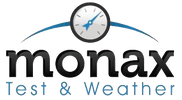Weather Station Troubleshooting Guide
Mid-market weather stations such as Aercus Instruments, Netatmo or La Crosse are great value for money these days. Many people find them perfectly suited to their needs and have no need for more advanced equipment. However, it would be unreasonable to expect mid-market stations to keep up with more expensive stations in terms of robustness and reliability but most problems that arise can be handled with some careful setup and preventative maintenance.
Instruction Manuals
A good number of performance issues can be avoided with proper set up. Make sure you read the manufacturer’s manual when installing your home weather station, rather than only after you encounter a problem.
During the installation process, it may take a bit of time to establish a connection between the wireless sensors and the receiver. It does not mean that one of the two are not working, just be patient. If an inordinate amount of time passes and still no connection has been made, consult the manual.
Waterproofing
Some parts of weather sensors like the battery and transmitter are unlikely to be waterproofed. Doing this yourself can go a long way towards ensuring optimal functioning. To waterproof a compartment, simply apply silicone sealant or waterproof grease regularly.
Problems created by water penetration can also be stymied by establishing a drip loop on any and all cables. This is an easy process; just give the cables enough slack so that instead of travelling in a straight line from one destination point to another, they droop down, creating a low point that water can drip off of.
If you live in a place where it tends to get extremely cold, you might find that the low temperature or freezing rain impairs the movement of the rain gauge or the wind sensor. In that case, just spray penetrating fluid on the movable parts.
On a side note, sometimes the heads of the screws that are supplied are accidentally removed, causing a big problem. Use a screwdriver that perfectly fits the screw heads to prevent this.
Accuracy
Most likely, your temperature sensor will not include perfect shielding from the sunlight. You can easily make your own shield to ensure accurate data collection. Just make slots in a plastic sheet and place it over the sensor. Alternately, you can site the sensor in an area with enough shade to prevent the sunlight from causing skewed data (but not too much to disallow the solar powered battery from charging if it has one).
Barometers need to be calibrated to official weather data so that the readings you get from it are relevant to the conditions at sea level, the altitude all barometers refer to in their measurements of air pressure.
A rain gauge can look like the ideal perch to passing birds, which often do what their species are known for and leave a gift inside. Fastening a couple of loose lengths of wire to the sensor is a good preventive measure that will not affect the data collection process. And like many other types of sensors, rain gauges require regular cleanings in order to continue to report accurate information.
Radio Reception
The wireless connection between the sensors and receivers is crucial to the efficacy of the weather station. If the signal transmitted by one of your sensors is poor or out of range of the receiver try relocating the sensors or console (be aware of possible sources of interference such as PCs, portable phones etc) and/or replace the batteries. Note that typical house walls etc reduce all wireless signals down to 20-40% of their maximum. To test whether range or interference is an issue bring the transmitter and console next to each other and follow the appropriate reconnect procedure so the console picks the sensor signal back up. If that is ok then you may have a range or interference issue.
An inadequate power source can also result in poor signal reception. Solar powered batteries may lose power during periods of cloudy or overcast weather, which can greatly affect the sensor’s functioning. If this happens to you, consult the manual for recommendations on how to replace the batteries.
An issue that can’t really be fixed by any act of the user save purchasing a new model is that some less expensive weather stations have relatively long data update intervals. When the wind sensor is concerned, this can result in important information being left out of the reported data. An update interval of 2 minutes for an anemometer can cause the console to completely miss information about strong gusts that would greatly impact the average wind speed. This is one of the instances where cable connections might perform better.
Lastly, remember to save the packaging your weather station came in as you may need to return it one day. But you’ll probably find yourself very happy with your new unit.
Please select the download you require below:
Aercus Instruments
Aercus Instruments Troubleshooting Guide
Cumulus Basic Installation Guide
Davis
iButtons
OneWireViewer Quick Start Guide
OneWireViewer Driver Update (x64)
OneWireViewer Driver Update (x86)
La Crosse
Software
Cumulus Basic Installation Guide
DT-171 USB Temperature and Humidity Data Logger Software & Drivers
DS-100 USB Temperature and Humidity Data Logger Software & Drivers
